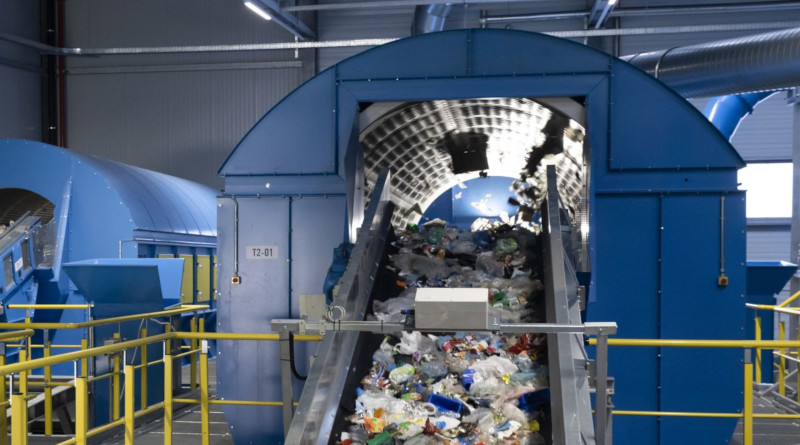The sorting challenge
Dry recyclables and light packaging – The varying and constantly changing composition of waste materials poses a challenge for designers of sorting plants, which need to deliver consistently high purity rates while managing an increasing degree of complexity. Stadler, a leading supplier of sorting plants for the recycling industry, has the broad wealth of experience and know-how to develop high-performance facilities with the best plant concept for each type of material that will meet the specific requirements of every individual customer.
The recycling and waste disposal sector is in constant evolution, with an increasing degree of complexity and growing volumes. New regulations, policies and targets have been introduced across the world to address the global waste issue. Different countries have adopted varying approaches to collecting and separating dry mixed recyclables and light packaging as they strive to reduce the quantity of materials going to landfill. The composition and density of this waste is also constantly changing, with an increasing proportion of films and plastic trays. At the same time, the recycling industry is demanding high purity levels of the sorted fractions so that their recycled end-products can compete with virgin materials on the market. These factors are driving a demand for sorting plants capable of processing multiple materials flexibly while delivering consistently high purity rates.
Design considerations: waste material composition
The composition of waste materials arriving at sorting plants can vary depending on different factors, starting from the way waste is collected and separated, which can vary from country to country or even at a regional level. Drop-off systems tend to lead to cleaner waste than collection. The way local authorities charge for Municipal Solid Waste collection can influence how much people sort their waste for recycling. Different demographics in rural and urban areas will result in strong variations in the composition, and there will even be seasonal fluctuations.
Managing increasing complexity
The introduction of new European recycling targets is driving changes in the way waste is collected. In Belgium, the decision was taken to extend the types of plastics collected in the blue bag for packaging waste to include all plastic packaging. As a result, the sorting plant in Willebroek, operated by sustainable waste management solutions provider Indaver, would have to process much bigger volumes and manage the greater complexity involved in sorting more materials. The company decided to invest in a new facility, three times bigger than the previous one. They chose Stadler for the design of a plant with the necessary capacity and capability to manage the complexity.
Stadler’s experience came into play, as it developed and built a new plant capable of sorting the high volume of packaging waste into 14 fractions at a throughput of over 20 tph using a bag ripper, drum screens, magnets, wind sifters, eddy current separators, ballistic separators and optical sorters.
Flexibility built into the design and delivery process
“The key challenges to address when designing and building a plant for dry mixed recyclables and light packaging are the changes in material composition, in the packaging and in purity requirements, because they can affect the quality and recovery of the products” explains Jürgen Berger. “These changes can happen between the design phase and final plant commissioning, and this possibility needs to be factored in. At Stadler, we have the experience to address these issues by integrating flexibility and spare capacity in our design.”
This approach was particularly important when Stadler designed a future-proofed, flexible sorting plant for the Schroll Group in France, for whom the company had previously designed and built five plants. On the customer’s request, the facility was designed to allow for future expansion and the sorting of further fractions, as well as the possibility of installing robots. Stadler addressed this demand by including two independent sorting lines – one for the treatment of multi-material and one for hollow material – a set-up that gives more flexibility.
Meeting the growing demand for recycling
The push to address the global waste issue by working towards a circular economy is driving a growth in the recycling sector. As a result, Stadler has seen an increase in the demand for new sorting plants as well as upgrades and expansions of existing facilities.
This was the case of Viridor, one of the UK’s leading recycling, resource and waste management companies, which undertook a £ 15.4 m (US $ 21,2 m) upgrade of its Masons Materials Recycling Facility (MRF) in 2020. As one of two developers of this plant, Stadler transformed its operation, increasing its capacity from 65,000 tpa to 75,000 tpa and significantly improving output quality, achieving 98.5% purity on newspapers and pamphlets and 95% for polymers such as PET, HDPE and mixed plastics. Viridor is focused on developing opportunities to put quality recycling materials back into the economy where they belong. The Masons investment plan has been specifically designed not only to achieve greater capacity but to match the quality of its output with market requirements. The plant now has the same infeed material as before, but the upgrade has resulted in the facility being able to cope with an additional 10,000 t/a of material.

